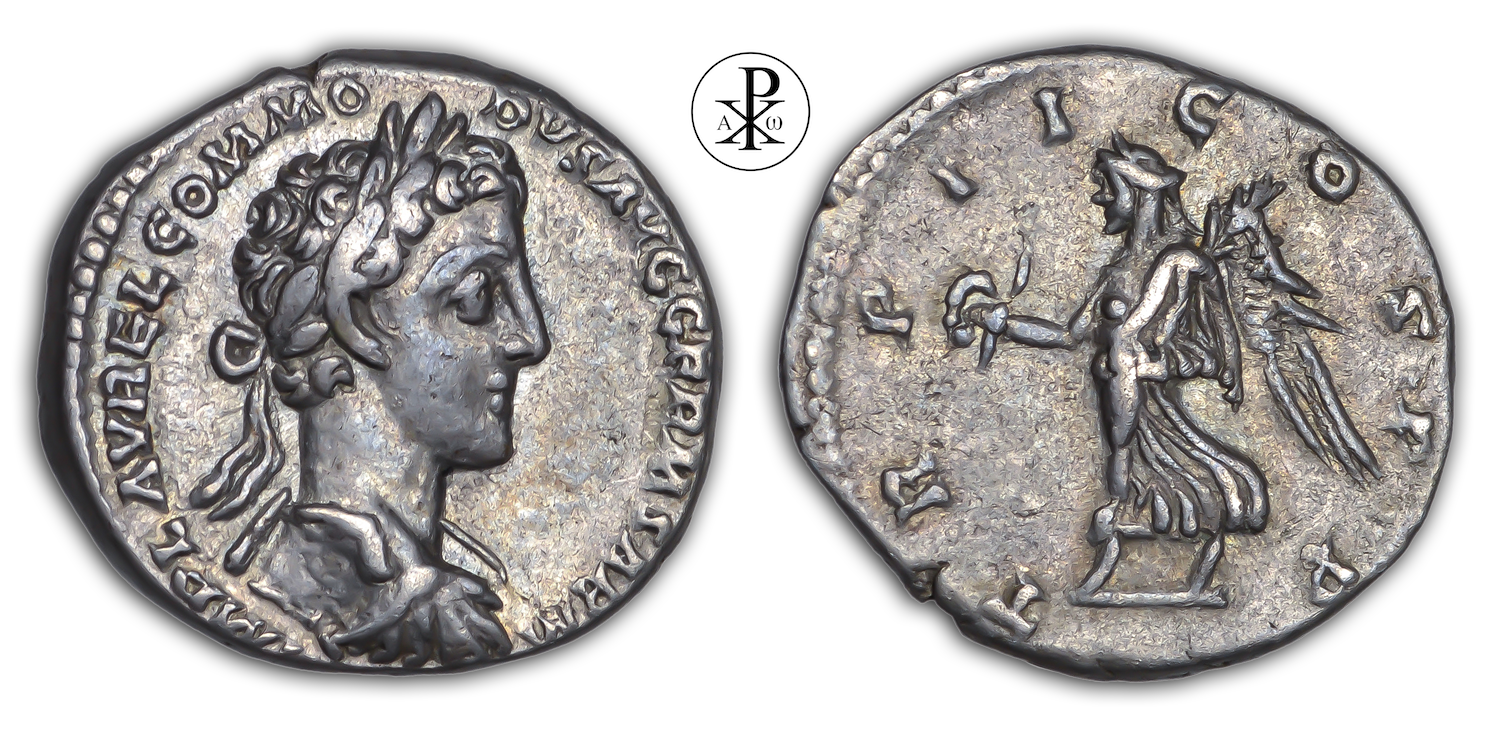Imperator Caesar Lucius Aelius Aurelius Commodus Augustus
Reign: Marcus Aurelius
Mint: Rome
Date: 177 AD
Nominal: Denarius
Material: Silver
Diameter: 18mm
Weight: 3.40g
Reference: RIC III Marcus Aurelius 642
OCRE Online: http://numismatics.org/ocre/id/ric.3.m_aur.642
Rare: R1
Provenance: Noonans Numismatics London, Great Britain (Auction 21, Lot 502)
Pedigree: From the Graham Collection of Roman Imperial Coins (Bt Spink 1972)
Obverse: Bust of Commodus, laureate, draped, right
Inscription: IMP L AVREL COMMODVS AVG GERM SARM
Translation: Imperator Lucius Aurelius Commodus Augustus, Germanicus, Sarmaticus
Translation: Imperator, Lucius Aurelius Commodus, Augustus, conqueror of the Germans, conqueror of the Sarmatians
Reverse: Victory, winged, draped, advancing left, holding wreath in extended right hand and palm, sloped over left shoulder, in left hand
Inscription: TR P II COS P P
Translation: Tribunicia Potestate Secunda, Consul, Pater Patriae
Translation: Holder of tribunician power for the second time, consul, father of the nation
Comment: The minting time of this type of denarius can be dated well. On 27 November 176 AD (Comm. 2, 4. 12, 4), soon after his return to Rome, probably on the same day that Marcus triumphed (cf. o. vol. I p. 2302), Commodus was elevated to emperor by his father. Then, on 1 January 177 AD, he assumed the Consulate for the first time, with M. Plautius Quintillus. During the year Commodus received the titles Augustus and p(ater) p(atriae) and was thus elevated to equal co-emperor with his father. He had already received the victorious titles Germanicus and Sarmaticus in the years before (172 and 175 AD), so that now in 177 AD the titulature of Commodus was „Imp. L. Aurelius. Commodus Aug. Germ. Sarm. tr. p. II cos. p. p.“ (or also „Imp. Caes. L. Aurelius. Commodus Aug. Germ. Sarm. tr. p. II cos. p. p.“) read. The background of this coinage of the victorious Victoria, depicted with a wreath and a palm branch, may be the victorious campaigns „de Germanis“ and „de Sarmatis“. This is also supported by the mention of all his victorious titles. After the return of Marcus Aurelius and Commodus, first the father, then later the son celebrated a magnificent triumph in Rome. The father even walked beside the triumphal chariot of his son (Marc. 16, 2).
The coin was a part of the famous Graham Collection of Roman Imperial Coins (Tinchant, Paul [a.k.a. „Graham, Richard J.“]; Jacques Schulman N.V. The Richard J. Graham Collection of Ancient Greek, Roman and Byzantine Coins including a splendid series of Roman Bronze Medallions. Catalog of public auction [243], 8 June 1966. Amsterdam. 1966. [Clain-Stefanelli 3668 & 4978]).
